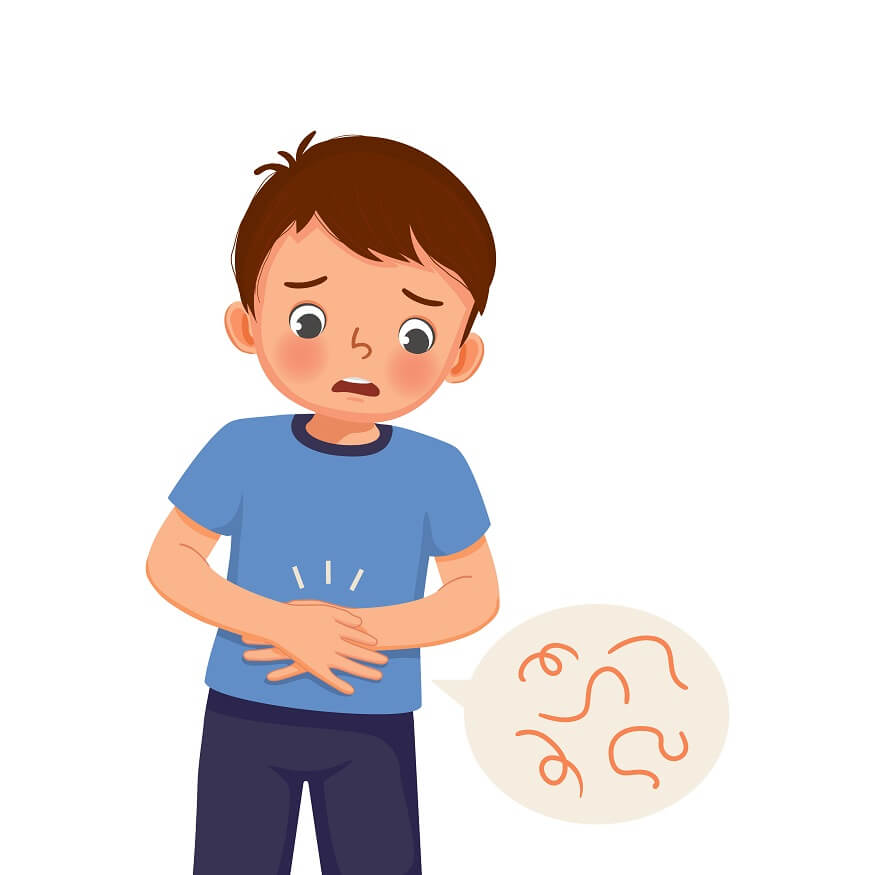Diarrhoea in children is not an unusual occurrence, as children’s digestive systems are often more sensitive than those of adults. Common in infants and toddlers, diarrhoea is usually a temporary condition that can be addressed through proper care and attention. However, persistent or severe diarrhoea may indicate a more serious illness that requires medical attention.
Typically driven by an infection within the gastrointestinal tract, kids catch this infection through contaminated food or water, or by coming into contact with an infected person. Other causes may include food allergies, lactose intolerance, certain medications, long-term conditions like irritable bowel syndrome, and running high levels of stress or anxiety.
In this blog, we will delve deeper into the symptoms, causes and solutions for diarrhoea in children.
Also Read: Foods Kids Should Avoid in Rainy Season
Diarrhoea in Children Symptoms
The most obvious symptom of diarrhoea in children is a drastic change in the consistency and frequency of stools. The stools become loose and watery and occur more frequently than usual. In some cases, this can be coupled with nausea and an urge to vomit. A child may also experience abdominal pain or cramping, loss of appetite, or signs of dehydration.
As watery stools flush out the body’s stores of water and salts, the child may suffer dehydration that manifests through symptoms like dry mouth and tongue, sunken eyes, reduction in energy levels, and decreased urination. Severe dehydration can cause lethargy, sunken fontanel in babies (the soft spot on the top of a baby’s head), and a fast or weak pulse. Sometimes fever, along with mucus or blood in the stool may be observed, indicating a potentially severe infection.
Also Read: Sore Throat in Children: Causes, symptoms, treatment
Diarrhoea in Children Causes
Diarrhoea in children can be triggered by various factors including bacterial, viral and parasitic infections, food poisoning or intolerance, and certain medications. It may also be a symptom of other diseases, such as Crohn’s disease, celiac disease, or cystic fibrosis.
Viral gastroenteritis, also known as stomach flu, is often a common cause of diarrhoea in children. This condition is triggered by viruses like rotavirus and norovirus. While rotavirus generally infects children under the age of 5, norovirus affects individuals of all ages but is more severe in children.
These viruses are typically transmitted through the faecal-oral route, such as in contaminated food or water or through direct contact with an infected individual.
Bacterial infections like salmonella, shigella, and E.coli also cause diarrhoea. These bacteria are commonly found in contaminated food and water. Moreover, several parasitic infections, predominantly giardiasis and cryptosporidiosis, can also result in diarrhoea. They mostly spread through untreated or contaminated drinking water but can also be picked up from infected surfaces or pets.
Some children may develop diarrhoea due to food intolerances or allergies. Lactose intolerance, for instance, can trigger diarrhoea if the child consumes dairy products. Similarly, Coeliac disease—an autoimmune disorder that leads to intolerance to gluten, can cause diarrhoea among other symptoms
Certain medications, like antibiotics, can also cause diarrhoea. Antibiotics alter the natural balance of bacteria in the gut, leading to diarrhoea, a condition referred to as antibiotic-associated diarrhoea (AAD). AAD can sometimes be severe and can result from Clostridium difficile, a bacterium that causes life-threatening inflammation of the colon.
Also Read: Indigestion in Children: Causes, Symptoms, and Natural Remedies
Diarrhoea in Children Solutions
When it comes to treating diarrhoea in children, preventing dehydration is of top priority. Since diarrhoea often leads to significant fluid loss, keeping your child adequately hydrated is crucial. Water and oral rehydration solutions that contain the right mix of salts and sugars are recommended. If a child is breastfeeding, it’s recommended that the feeding continues.
Hence, the first-line treatment for diarrhoea in children is Oral Rehydration Therapy (ORT). This involves the intake of prescribed oral rehydration salts (ORS) that replace fluids and electrolytes lost in diarrhoea. The World Health Organization (WHO) has recommended a formula containing glucose and electrolytes to encourage fluid uptake within the intestines. This effectively mitigates the risk of dehydration, which could lead to serious complications
Alongside ORT, a continued normal diet is necessary, including a variety of foods and breastfeeding in infants. It is a misconception that ‘starving out’ the illness would help. Research reveals that reintroducing normal food, including complex carbohydrates, lean meats, yoghurt, fruits, and vegetables, aids in quicker recovery. The BRAT diet (banana, rice, apple sauce, toast) is often advised due to its bland and binding nature.
Consult your healthcare provider about incorporating probiotics into your child’s diet. Probiotics can promote healthy gut bacteria, potentially reducing the duration and severity of diarrhoea.
Apart from ORT and a balanced diet, medication may be required for some causes of diarrhoea. Antibiotics are necessary when bacterial infections are the cause. Antiparasitic drugs work well when parasites are responsible. These treatments should be administered under the advice and supervision of a healthcare provider to avoid possible side effects or resistance development. For severe cases, hospitalisation may be required to provide fluids and salts intravenously.
Preventive measures are as vital as treatment solutions. Maintaining proper hygiene and cleanliness should be a priority to prevent diarrhoea. Encourage regular hand washing, especially before handling food and after using the bathroom. Ensure appropriate sanitary practices, clean drinking water, and properly cooked food, as these are paramount in preventing diarrhoeal episodes in children.
Collaboration with healthcare services to monitor and manage children’s health is crucial as well. Regular check-ups and timely vaccinations against diarrhoea-inducing pathogens like Rotavirus can significantly decrease the chances of occurrence.
Also Read: 10 Common Childhood Illnesses
Conclusion
While diarrhoea in children is common, it should not be taken lightly. Observation of changes in bowel movements, behaviour, and other symptoms is necessary to promptly treat and manage this condition.
Preventing diarrhoea mainly involves hygiene and sanitation practices, including regular handwashing and safe food preparation methods. Awareness of the causes and preventive measures can greatly reduce the occurrence of this malady.









